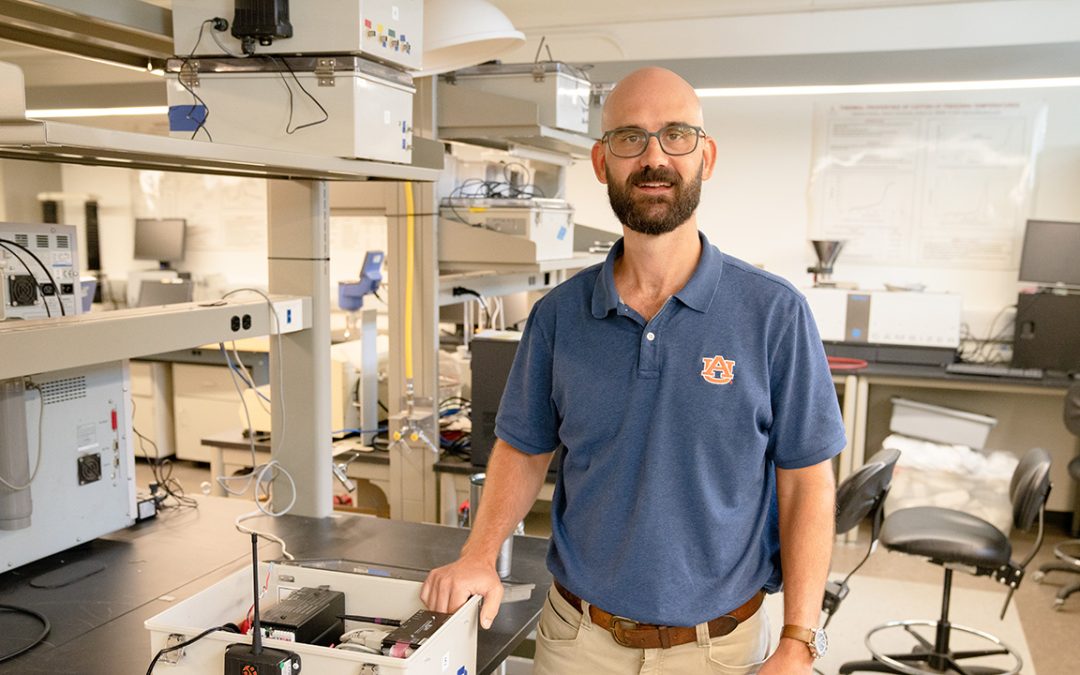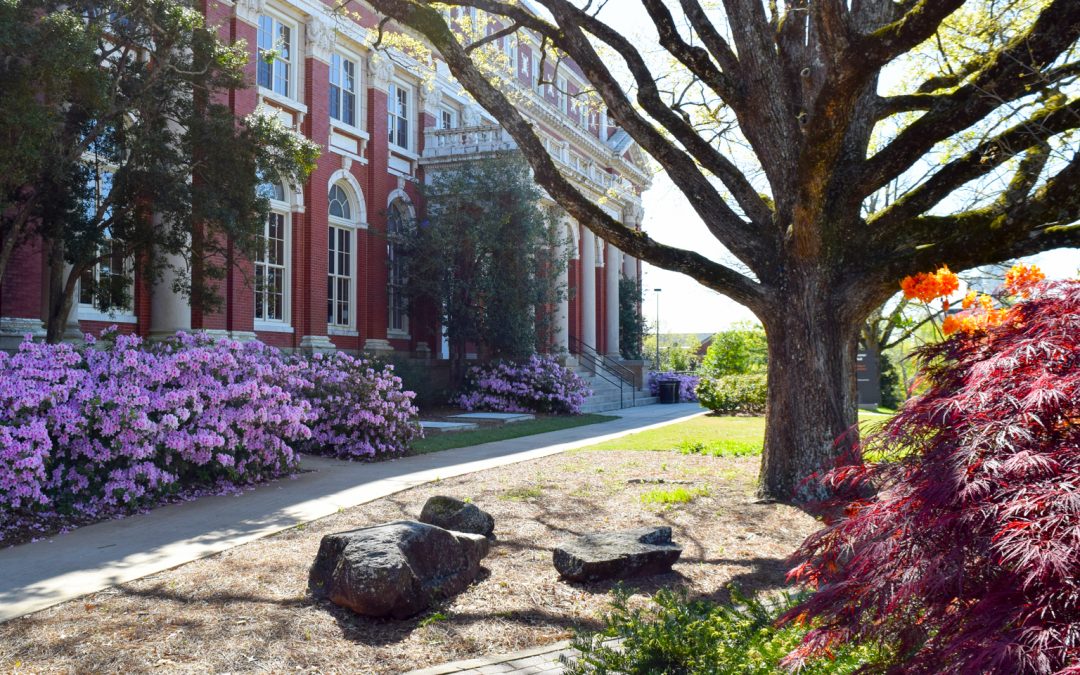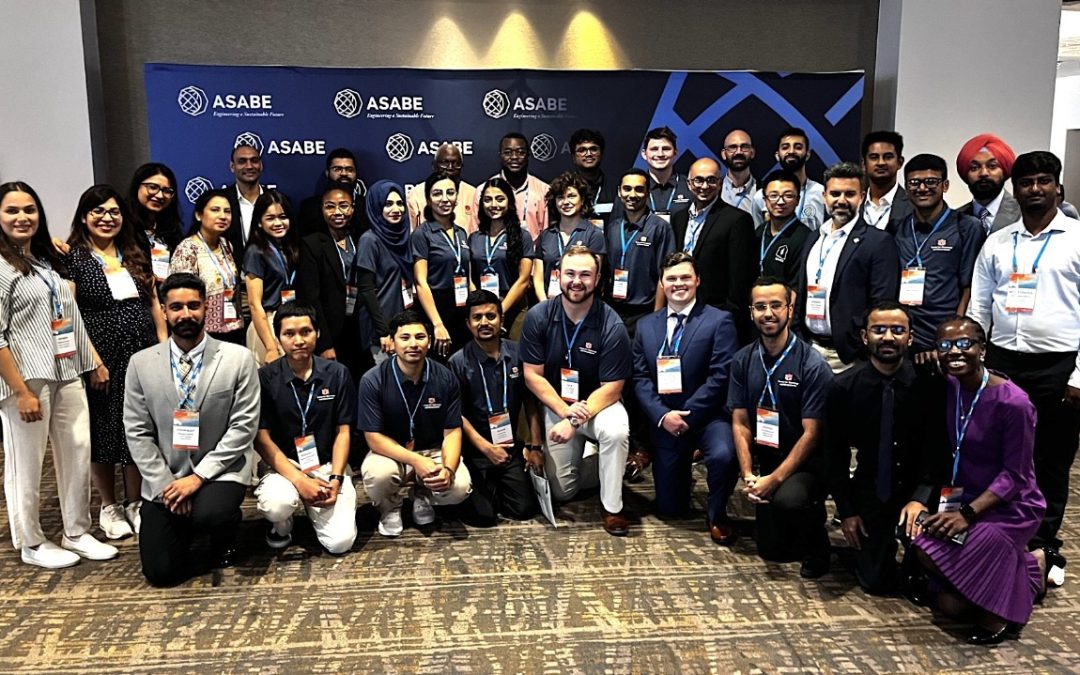by MARY CATHERINE GASTON

Before completing his degree in agricultural engineering, Joe McGee took two years off to help the Allies win WWII flying with the 460th Fighter Squadron in the war’s Pacific Theater.
The first time Joe McGee journeyed from his hometown of Eutaw, Alabama, near the state’s western border, to Alabama Polytechnic Institute in Auburn, he hitchhiked to get there. It worked out so well for him that the agricultural engineering major made it a habit.
When it was time to head to school, his parents would drive him to nearby Demopolis, where he’d thumb a ride east. When he was ready to make the trek home, he’d join other boys on Toomer’s Corner, where they all waited for someone going in the right direction to let them tag along.
“As long as I had an Auburn sticker on my bag and my ROTC hat on, I never had trouble getting a ride,” he says.
On one such ride, as he passed Craig Field in Selma, McGee noticed the Army Air Corps planes taking off and landing at the pilot training facility. He had never paid attention to a plane before, but at that moment, something clicked in the 18-year-old’s mind.
He had joined the Reserve Officer Training Corps on Dec. 7, 1942—exactly one year after the attack on Pearl Harbor—and was serving in the enlisted reserve in field artillery.
“Problem was, I hated walking,” he says. “When I saw those planes flying, I thought, ‘Well, I’d rather fly than walk in this war.’”
After 10 weeks of basic training in Miami and a little time in Indianapolis awaiting flight school, the small-town teenager tested well enough to become a pilot. He endured short stopovers in Arkansas and Kansas, then finally got his wings—and his commission as a second lieutenant—in Eagle Pass, Texas, and headed to Baton Rouge, Louisiana, to learn to fly the single-engine P-47 Thunderbolt.
By December of 1944, at just 20 years old, McGee was part of the 460th Fighter Squadron based in the Philippines, near the center of WWII’s Pacific Theater. Flying search and destroy and close air support missions over China and Japan, it didn’t take long to discover that the war-weary P-47s didn’t have the range they needed. So after one brief flight—“on-the-job training”—McGee and his squadron graduated to flying P-51 Mustangs.
On Aug. 6, 1945, McGee was flying his plane, Chief Eutaw, out of Ie Shima, Japan, an island just northwest of Okinawa.
“We had no idea the [atomic] bomb was going to be dropped that day,” he recalls. “They had just marked that area out in red on our flight maps and told us not to fly there.”
With 97 combat missions under his belt and weighing 40 pounds lighter than when he’d left Alabama, McGee headed home from Tokyo on the aircraft carrier Intrepid soon after the war’s end. He was back in class on Ag Hill in March of 1946, just in time for his 22nd birthday.
He graduated in June of 1948, but not before meeting the love of his life, Barbara, on a blind date. After finishing school, the pair married, moved to Eutaw and had two daughters, Carol and Diane. Together, the couple built a cattle herd “on the weekends” while he worked weekdays for the newly founded Mississippi Chemical Corporation.
At one point, McGee’s Brangus herd reached 200 head. Though raising cattle is one of his greatest joys in life, he’s recently cut his herd back to around 30. Just as he has for the past 68 years, at 92, McGee still works the cows daily on the farm his grandfather once operated.
He reflects fondly on his memories from Auburn and the war, smiling as he clearly recalls details of classes he took, professors he admired and the men he served alongside. He’s one of four 460th members still living.
“I am not a hero—I don’t want anyone to think that,” McGee says. “I just did what I was told to do when I was told to do it.”




